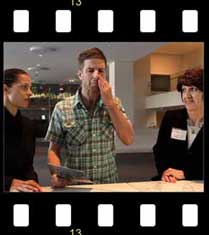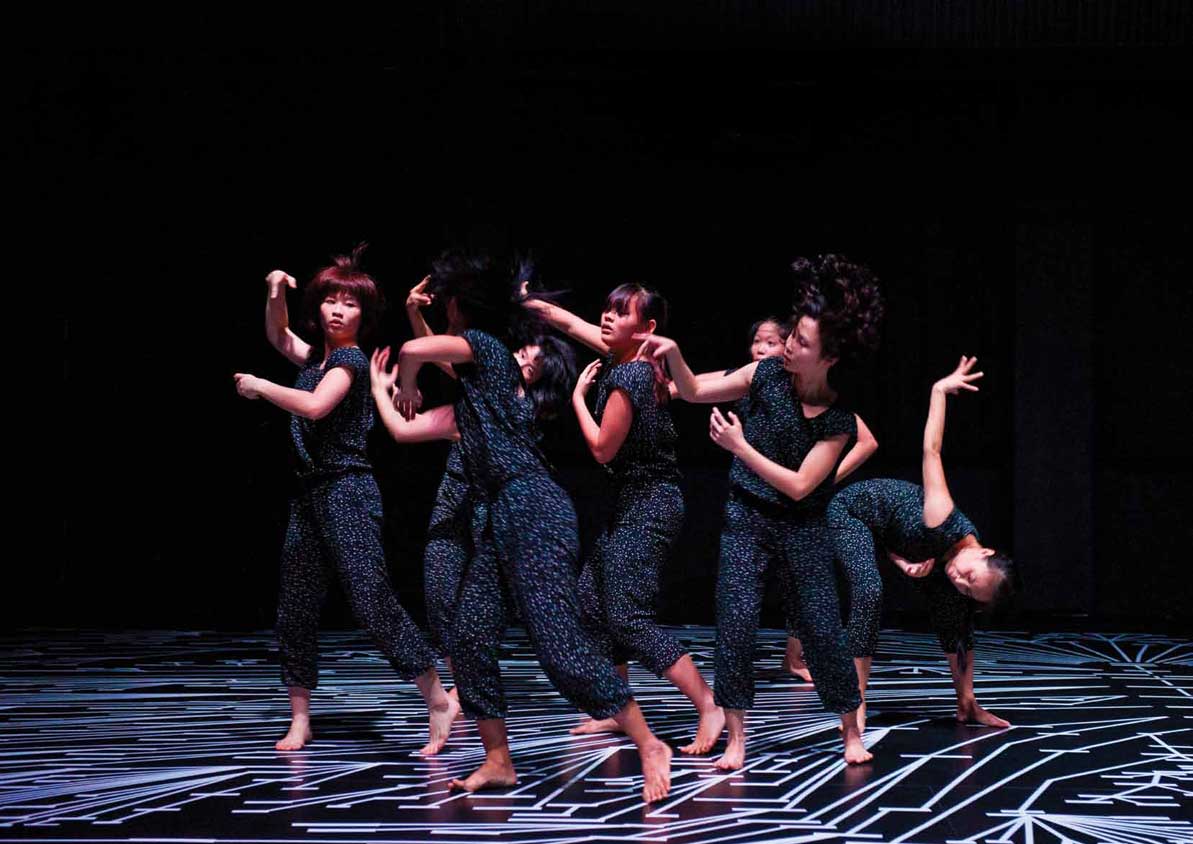Stories > Connecting Cultures
Connecting Cultures
At its deepest level, the creative process is sparked by the human need to connect. In Singapore and around the world, artists are reaching out to their counterparts across borders seeking to do just that and, in the process, creating new works of art.
By Wyn-Lyn Tan
Travel has always been closely linked with our innate curiosity to discover different cultures, people and places. Artists often travel to gather material for research and pursue fresh inspiration and creativity.
In a world of advancing communications technologies, artists are more than ever getting together to work in hybrid environments across borders, and across disciplines. Artists are working with scientists, sculptors with engineers, dancers with curators — and the result of such cross-cultural, cross-disciplinary participation is an enriched cosmopolitan mindset, and a connection to the wider, international arts scene.
Closer to home, the Singapore Internationale (SI), an arts grant by the Singapore International Foundation (SIF), has been providing local artists opportunities to share their work and connect with a global audience. Since 2000, more than 250 artists and groups have presented their art in over 50 countries through SI. Artists from visual, performing and literary arts to music, design and multi-disciplinary art have gone on to collaborate with counterparts from other cultures — embarking on exciting, creative processes and provoking alternative perspectives on art and art-making.
IMPOSSIBLE IS POSSIBLE
Audio-visual group Syndicate recently participated in the Worldwide Festival Sete 2011 on an SI grant. It was the first time made-in-Singapore electronica music and visuals were represented in the festival, sharing the stage with international artists from all over the world. On the festival’s fourth day, Syndicate’s visual artist Brandon Tay was invited to do impromptu ‘live’ visuals for an audio-visual performance.
“The show was a blast — the only segment within the festival to feature ‘live’ visuals alongside the music,” says Syndicate of their exhilarating encounter.
Director Jeremiah Choy recalls lessons with his counterparts in Manila on the musical Dragon Tales. “I had to navigate, negotiate and network in a totally different environment which was out of my comfort zone. This refreshing ‘lack of control’ over situations and change of scenery opened up wonderful possibilities within me,” he shares.
Artist Michael Lee made friends with British artist Bob Matthews through a residency exchange programme by SIF and the British Council. The two are taking their cross-cultural explorations further in a series of black-and-white prints entitled The Great Levellers that examines human existence in the 21st century.
“The best collaborations come from deep respect among collaborators, and an almost blind faith that the impossible is possible,” states Michael.
DIFFERENCES THAT INSPIRE
It’s a view shared by performance artist Elizabeth de Roza’s long- distance collaboration with contemporary theatre artist Eugenia Cano of Teatro Kalipatos from Mexico. The pair first met in Cuba, and again in Brazil when Elizabeth presented her work there with the support of SI and the National Arts Council. In Brazil, the two artists discussed collaborating before returning to their respective countries. “The process was very interesting as we had to work independently first. Prevailing differences stood out in the beginning, especially in the way the two cultures perceived one another — but instead of highlighting the differences, we attempted to highlight the differences in the similarities,” shares Elizabeth.
Their long-distance collaboration culminated in full-house performances at the principal theatre in Guanajuato, Mexico, the International Cervantino Festival and the Festival Viva la Banda. “It has opened avenues of great exchange and dialogue which I believe can be translated across cultures,” says Elizabeth.
The enriched experience of cultural cross-pollination and collaboration is two-fold — the more Singaporean artists put their work out into an international arena, the more the world seeks to connect with our community. Singaporean artists are initiating collaborations, or are increasingly being invited by other artists, arts presenters and organisations from different nations leading to sustained meaningful exchanges and a greater richness in our island’s arts scene. Three examples of such collaborations follow.
FABRIC OF A NATION
“As artists, every day we try to think about our role in society and the impact of our actions. What are the issues we want to contest and what are the values we hope to protect?” says Singaporean artist Samantha Tio, 26, known professionally as Mintio.
These questions, and the desire to make more accessible art, took Mintio to the village of Kebon Indah in Central Java, Indonesia, where the traditional craft of batik tulis — handpainting of patterns with natural dyes — survives. With an SI grant, she embarked on a socio-relational visual arts project titled The Wax On Our Fingers with Indonesian artist Budi Agung Kuswara, 30, known as Kabul.
The two contemporary artists sought to create unique ‘self-portraits’ — to acknowledge the role of women as culture makers in Indonesian society — with the realism of photography and the decorative and symbolic nature of age-old batik motifs by working with the Kebon Indah batik makers. Fine arts photographer Mintio and Kabul took photographs of the women batik makers, and printed them on cloth using the cyanotype printing process that gives a cyan-blue print. The batik makers then added batik motifs of their choice to their own portraits.
This unique collaboration gave Mintio insights into the batik-making techniques and the rural community’s culture, where the art was no longer the work of an individual but about the interactions between individuals and cultures.
“Every batik maker we met received us with hospitality and patience,” says Mintio, despite not quite understanding what the artists wanted to do at first. When the first pieces of artwork were realised, “the joy and pride that we often experienced in solitude with art was magnified and shared among the people we worked with,” says Mintio.
DANCING ACROSS BOUNDARIES
By Marlene Ditzig
Invigorating the traditional Bharata Natyam art form with contemporary dance elements is no easy feat, and the founder/principal choreographer of Maya Dance Theartre, Kavitha Krishnan, regularly casts her gaze overseas, engaging foreign talents from across the globe in hopes of “deriving vocabulary”.
Maya Dance’s most recent exchange programme collaboration with ODC Theater in San Francisco gave the American troupe an understanding of what it took to dance the Bharata Natyam, something they had seen but never performed. As ODC learned the intricate movements of the classical Bharata Natyam, Maya dancers learned ballet, modern, and tribal contemporary dance from their American counterparts.
Kavitha, an occupational therapist and self-taught dancer, believes that her dancers must improve and become creators of dance rather than passive receivers. The collaboration was an eye- opener for her younger dancers.
Kavitha remembers two dancers who initially joined Maya as street dancers. “Through these collaborations, they realised the importance of being knowledgeable and skilled, so they went back to study.”
Kavitha has seen Maya Dance grow in numbers by careful selection of young talent. “You grow more when you go out of your comfort zone, so I’m interested in engaging them in collaborations because they are more funnelled in their thoughts and their focused energy yields a better result.”
SOCIAL STUDIES
 Serbia-born artist Ana Prvacki, 36, participated in this year’s prestigious Documenta 13 with help from SI. Documenta is the most important contemporary art exhibition that happens every five years in Kassel, Germany.
Serbia-born artist Ana Prvacki, 36, participated in this year’s prestigious Documenta 13 with help from SI. Documenta is the most important contemporary art exhibition that happens every five years in Kassel, Germany.
Prvacki’s work draws on daily practices and social research, exploring the comedic potential of faux pas, evident in her Documenta 13 project, which consisted of a conversation and training on etiquette, a series of six public service announcements shown in service areas, and a lecture by Professor Kwame Anthony Appiah.
She explains, “It is about the ethics and morals of living together, ideas of cosmopolitanism, and bridging cultural difference (inspired by living in Singapore and the Kindness Movement). Etiquette is often considered frivolous and decorative, but it is ultimately a question of morals and ethics. Even the worst faux pas can be an occasion to learn and bond. How we relate to others is an intricate, playful, amusing and at times exasperating concoction of emotions, prejudices, projections and trans- generational histories.”

“This project allowed me to collaborate with the curatorial and the educational departments, and highest level professionals. I have learned a lot about developing a concept and managing a big team. Exhibiting at Documenta is one of the most significant and important moments in the career of an artist. This grant made it possible for me to develop an ambitious and complex project,” she says.



